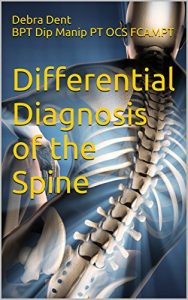Dissecting Thoracic Aneurysm:
- Severe chest pain without change with change of position or lying down and can refer to upper back
Dissecting Abdominal Aneurysm:
- sudden severe constant low back pain, boring, tearing
- flank pain, abdominal pain and or groin pain
- pulsating mass in the abdomen
- fainting and hypotension
- cyanosis
- confused mental state, distressed
An abdominal aneurysm can be a deep seated boring lumbar pain, unrelated to activity or a severe tearing pain associated with dizziness and sweating. Atherosclerotic changes in the posterior wall of the abdominal aorta have been linked to back pain in older adults. 1
Aortic Aneurysm 2, 3, 4
An aortic aneurysm can be asymptomatic or very symptomatic. It can be found on a routine examination or x-ray. On examination of the abdomen, it may be detected by noting a pulsating mass in the abdomen. Once an aneurysm becomes symptomatic there may be abdominal, back, flank and groin pain. An acute dissecting aortic aneurysm is where an aneurysm forms a hematoma in the media of the artery will cause intense, tearing, boring, sharp pain in the into the chest, abdomen, groin and back. There may be a sudden drop in blood pressure. No change of position will alter this pain and this is an emergency situation.
A patient’s age over 50 more so over the age of 65 is a risk factor but an aortic aneurysm can be congenital. Starting a weightlifting program in the presence of atherosclerosis, hypertension or an asymptomatic aortic aneurysm may precipitate a rupture. It is important that patients have a medical evaluation prior to starting a weight lifting program in this age group. Therapists can feel for a pulse on the surface of the abdomen at the umbilicus with the patient in hook/crook lie. Slowly move the palpating hand laterally until the pulse disappears. If this distance is greater than 2.5 centimeters, the patient should be referred out to an MD.
1) Maffey, Lorrie, Canadian Physiotherapy Association Curriculum Manual Therapy Courses (E-V Series),1999.
2) Dutton M. Orthopaedic Examination, Evaluation, & Intervention. New York: McGraw-Hill; 2004.
3) Goodman, C, Kelly Snyder, T. Differential Diagnosis for Physical Therapists.St. Louis: Elsevier, 2013.
4) http://emedicine.medscape.com/article/761627-overview


